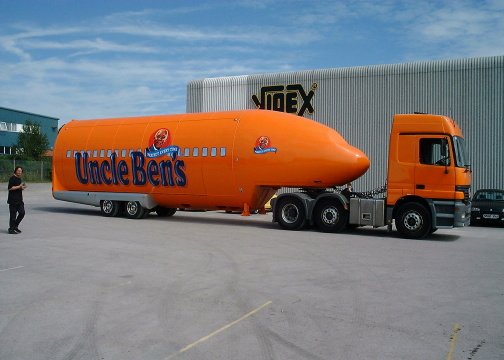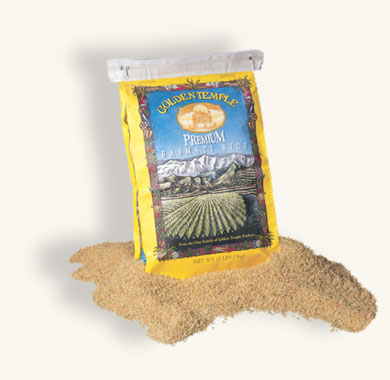For dinner I like to keep it fairly simple, having Oceans flaked white tuna mixed in with some Uncle Ben’s brown rice.
Ingredients (Tuna):
Tuna doesn’t have to much added ingredients to it but mainly includes:
- Light Tuna
- Water
- Salt
Tuna is a very good source of healthy omega 3 fats and rich in protein and minerals.
Production
The fishing industry has become one of the largest industries in the world, as there is a substantial increase In the overall demand for products such as Tuna and Salmon as staple foods in many countries. Large fishing vessels venture the sea taking in mass amounts of fish which are later brought back to land and produced into the finished goods you see every day in grocery stores. The industry has become so big in fact that there is serious concerns about over fishing and a decline in fish populations globally.
The video outlines seven steps in the production of the tuna fish. These steps include:
- Cutting
- Pre-cooking and cooling
- Cleaning
- Filling
- Brining/Oiling
- Closing
- Sterilizing
To the average person, including myself at the beginning of my food consumption experience, tuna is seen as a simple enough food that doesn’t require too much extra processing and use of energy and fossil fuels to produce. However as shown in the video, there are numerous steps that require the use of machinery to aid in the processing and efficiency of the manufacturing to get it to a finished product and out to consumers. It isn’t as simple as hand-cutting and putting it in to cans, rather, it requires an efficient process to ensure it is safe to be sold and at a standard appropriate for human consumption. In many cases there are fishing industries that use traditional hand cutting methods to minimize the amount of machinery needed however, many have gone the path of technological aid in order to increase efficiency and productivity.
The World’s Largest Tuna Fishing Vessel greek subs
As you can see from the video, some of the vessels needed to gather such high volumes of tuna are incredible and require enormous amounts of energy just to fuel the ship and transport the tuna back to land. Businesses tend to target more vulnerable countries who will allow them to capture huge quantities of fish without breaking any rules or laws. This is leading to ultimate devastation of the fish population in many areas of our oceans. The good thing about Ocean’s tuna is that they try to fish sustainably by only using regions which have healthy populations of fish by which there won’t be a significant impact placed on the species.
Transportation
Luckily for Canada, especially the BC area, there is a thriving fishing industry that doesn’t require massive transportation as many stores are able to buy there products from local fisherman. However, there is still a need for distribution throughout canada through the use of transport trucks which can be on the road for many days at a time, releasing harmful emissions into the atmosphere. Ocean’s Tuna delivers all around the world which results in the use of heavy shipping vessels and air travel allowing them to sell there product to consumers in other countries that do not have the processing capabilities. There is an obvious impact on the environment through the amount of energy needed to make the distribution possible. Living in Vancouver allows for very short distances to transport tuna as many of it will be processed and transported from Richmond B.C which is approximately 13.5 km from Vancouver.
Packaging
The packaging for Oceans Tuna is a small tin can that is produced from scratch. The company has not yet started to use recycled cans for their products but are looking into future possibilities of doing so. Recycled materials are not allowed on the packaging of a lot of food products yet as they have heavy BPA consistencies. Whether it is from scratch or recycled there is a lot of energy needed to create the cans and allows for large amount of energy outputs through the burning of fossil fuel creating even more green house gas emissions.
Uncle Bens Brown Rice
Rice is and has always been one of the largest staple foods on the planet and continues to feed billions of people, especially in countries where it is being grown and produced. Rice is not manufactured in Canada which means that most of the time it has to be imported from Eastern countries such as China and Japan, which are regions that thrive off rice production and also have it as their main staple food. Luckily, Uncle Ben’s rice is produced in the United States.
Production
Rice is a fairly simple food to produce and is done so in many countries through the use of manual labour processes which allow for sustainable harvesting and minimal technological energy and fossil fuel emissions as a result of producing rice. There is however a growing interest in mechanical harvesting which of course allows for much more efficient modes of production and for large volumes to be created in the shortest amount of time possible. These technologies are usually seen in very large rice growing operations where as traditional manual methods are usual seen in smaller more localized rice patty farms.
Uncle Ben’s rice is imported from Eastern countries as a raw material, and produced in Houston, USA. It uses methods that require machinery to aid in the production of their rice. One of their main mottos is “having a sustainable production system”, which includes reusing their rice hulls to create energy that helps power important parts of their plant that produces the rice. They do this instead of sending the hulls off to landfills which many companies do. Uncle Ben’s is keen on the idea of wasting nothing and ensuring that everything they make will be used in one way or another.
Transportation
Since rice is one of the largest food staples in the world, as mentioned before, there needs to be different and efficient methods to distribute rice all around the world to regions that cannot produce it. The rice can be transported through use of railroads, ships, trucks, and planes which allow for quick and easy importation and exportation of rice all around the world. However, like most things that aren’t locally grown, the cost of transportation in a non monetary sense ie. energy use and fossil fuel emissions is huge and powering these forms of transportation requires large quantities. It also doesn’t help that rice is largely produced in Eastern countries which means rice is bing exported and imported at frequent rates requiring a large consumption of energy. Uncle Ben’s manufactures their finished product in the U.S. but imports most of their raw rice from Eastern countries but continues to help increase the production in the U.S. to help cut down on importing product from other countries and decreasing energy consumption.
Packaging
Automatic Rice Packaging Machine
Rice packaging has become very easy and efficient through the use of technology. Machines have taken over traditional manual methods of packaging while reducing the time significantly. There is much energy required for these machines to run and puts forth the idea that efficiency is more important than environmental sustainability. Uncle Ben’s has taken the sustainable steps necessary in reducing emissions by using recycled cardboard to form their boxes of rice which eliminates the need for machines to create them from scratch starting at the paper mill plant. Much of the rice industry however uses plastic bags which are much cheaper to produce but requires the use of petroleum based products.










